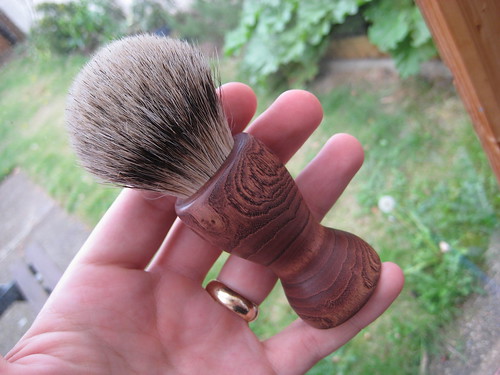OP
- Messages
- 596
- Thread Starter
- #17
Interesting... the ebony turned almost like plastic, very little splintering- in fact I was surprised. It does have a slightly grey/brown tint to it in very bright light, luckily I ordered if from the same wood supplier that Neil used to re-scale the matching razor, so it should be the same stuff!
Re Laburnum, I'm not sure if that brush is or not, I applied a medium/dark woodstain to the turned handle so that isn't a true colour. I'll try to remember to take a photo of the rest of the branch tonight so you can see. I also 'liberated' a chunk of holly that had been cut down a few months back, so that might end up being used for a brush or two.
I have a chunk of cocobolo sitting on the shelf, waiting for that special brush! I've heard how bad it can be so I'm waiting for the soon-to-be fitted extraction system before attempting it. I'm currently working on a wooden longbow made from hickory/ipe - now that's a wood that's fun: the ipe dust is bright yellow (the colour of tumeric) and turns red when it hits any alkaline. Couple that with the fact that it has a natural additive that causes any splinters to almost instantly become infected, and rather a lot of patience is required!
Chris
Re Laburnum, I'm not sure if that brush is or not, I applied a medium/dark woodstain to the turned handle so that isn't a true colour. I'll try to remember to take a photo of the rest of the branch tonight so you can see. I also 'liberated' a chunk of holly that had been cut down a few months back, so that might end up being used for a brush or two.
I have a chunk of cocobolo sitting on the shelf, waiting for that special brush! I've heard how bad it can be so I'm waiting for the soon-to-be fitted extraction system before attempting it. I'm currently working on a wooden longbow made from hickory/ipe - now that's a wood that's fun: the ipe dust is bright yellow (the colour of tumeric) and turns red when it hits any alkaline. Couple that with the fact that it has a natural additive that causes any splinters to almost instantly become infected, and rather a lot of patience is required!
Chris
